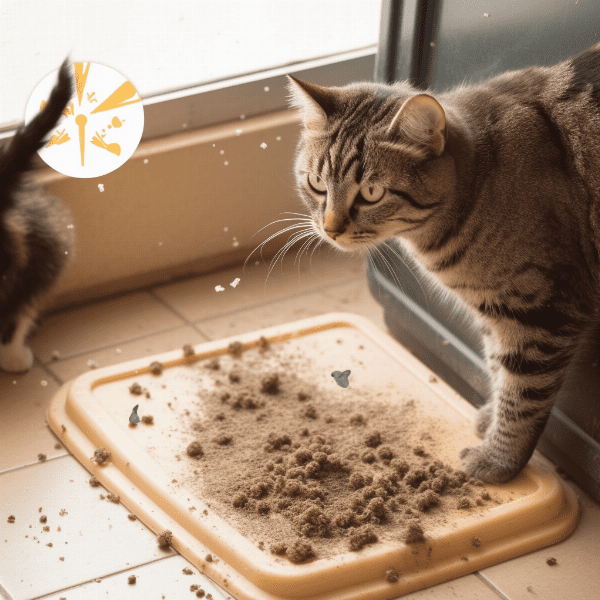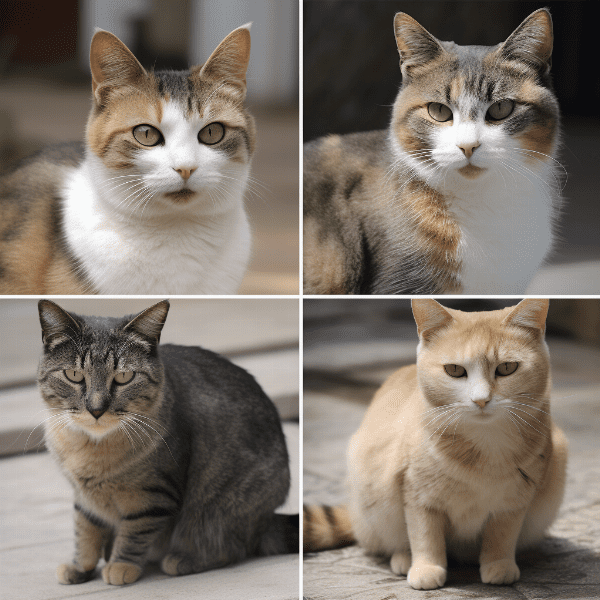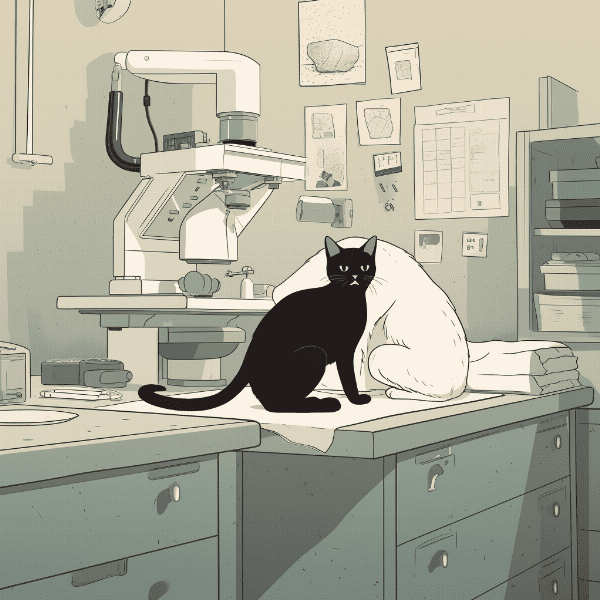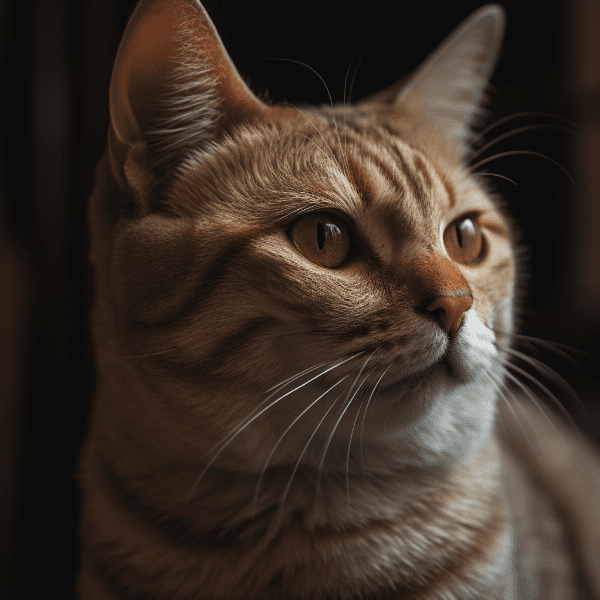Table of Contents
- What is Feline Infectious Peritonitis?
- How is Feline Infectious Peritonitis Transmitted?
- Signs and Symptoms of Feline Infectious Peritonitis
- Diagnosing Feline Infectious Peritonitis
- Treatment Options for Feline Infectious Peritonitis
- Managing Feline Infectious Peritonitis in Multiple Cat Households
- Preventing Feline Infectious Peritonitis
What is Feline Infectious Peritonitis?
Feline infectious peritonitis (FIP) is a viral disease that affects cats, particularly those who have weak immune systems. It is caused by a feline coronavirus and can result in a variety of symptoms ranging from mild to severe.
Understanding the Feline Coronavirus
Before we can understand FIP, we need to understand the feline coronavirus. Feline coronavirus (FCoV) is a common virus that is spread through feces, urine, and saliva of infected cats. Most cats who contract FCoV will not develop any symptoms and will eventually clear the virus on their own. However, in some cats, the virus can mutate into FIP.
How Does Feline Infectious Peritonitis Develop?
FIP develops when the feline coronavirus mutates into a more aggressive form that can evade the immune system. This mutated virus causes an inflammatory response in the body that can lead to the development of FIP. Unfortunately, there is no way to predict which cats will develop FIP.
Types of Feline Infectious Peritonitis
There are two types of FIP: effusive (or “wet”) FIP and non-effusive (or “dry”) FIP. Effusive FIP occurs when fluid accumulates in the abdomen or chest of the cat, leading to breathing difficulties and other symptoms. Non-effusive FIP occurs when the virus attacks various organs in the body, causing a range of symptoms depending on which organs are affected.
Who is at Risk for Feline Infectious Peritonitis?
Cats who have weak immune systems or are exposed to high levels of the feline coronavirus are at higher risk for developing FIP. Additionally, kittens and cats who live in crowded environments, such as animal shelters or multi-cat households, are also at increased risk.
Conclusion
Feline Infectious Peritonitis is a complex disease that can be difficult to diagnose and treat. Understanding the feline coronavirus, how FIP develops, and who is at risk for the disease is an important first step in preventing and managing FIP. If you suspect your cat may have FIP, it is important to seek veterinary care right away.

How is Feline Infectious Peritonitis Transmitted?
Feline Infectious Peritonitis (FIP) is caused by a mutated form of the feline coronavirus. The virus is primarily transmitted through contact with infected feces, urine, or saliva. However, it is important to note that not all cats who are exposed to the virus will develop FIP.
Transmission of Feline Coronavirus
The feline coronavirus is highly contagious among cats and can be spread through direct contact with an infected cat, or indirect contact with contaminated objects, such as food bowls, litter boxes, or bedding. The virus can also be spread through the air, although this is less common.
Mutating into Feline Infectious Peritonitis
While the feline coronavirus is common and easily spread, only a small percentage of cats who are exposed to the virus will develop FIP. This is because the virus must mutate into a more aggressive form in order to cause the disease. The factors that lead to this mutation are not fully understood, although it is believed that a weakened immune system may play a role.
Risk Factors for Feline Infectious Peritonitis Transmission
Cats who are exposed to high levels of the feline coronavirus, such as those who live in crowded environments or multi-cat households, are at increased risk for developing FIP. Kittens, elderly cats, and cats with weak immune systems are also more susceptible to the disease.
Prevention of Feline Infectious Peritonitis Transmission
Preventing the spread of feline coronavirus is the best way to prevent the development of FIP. This includes practicing good hygiene, such as washing your hands after handling cats and regularly cleaning and disinfecting litter boxes and food bowls. Keeping cats in a clean and stress-free environment can also help boost their immune system and reduce their risk of developing FIP.
Conclusion
Feline Infectious Peritonitis is caused by a mutated form of the feline coronavirus, which is primarily spread through contact with infected feces, urine, or saliva. While not all cats who are exposed to the virus will develop FIP, certain factors, such as a weakened immune system, can increase a cat’s risk. Preventing the spread of feline coronavirus through good hygiene and providing a stress-free environment for cats can help reduce the risk of FIP transmission.

Signs and Symptoms of Feline Infectious Peritonitis
Feline Infectious Peritonitis (FIP) can cause a wide range of symptoms, which can make it difficult to diagnose. Symptoms can vary depending on whether the cat has effusive (wet) or non-effusive (dry) FIP, and which organs are affected by the disease.
Common Symptoms of Feline Infectious Peritonitis
Some common symptoms of FIP include fever, lethargy, loss of appetite, and weight loss. Cats with effusive FIP may also have fluid accumulation in the abdomen or chest, which can cause difficulty breathing. In cats with non-effusive FIP, symptoms may vary depending on which organs are affected. For example, if the kidneys are affected, the cat may have increased thirst and urination, while if the nervous system is affected, the cat may have difficulty walking or standing.
Diagnosis of Feline Infectious Peritonitis
Diagnosing FIP can be challenging, as the symptoms can be vague and non-specific. A diagnosis of FIP is usually made based on a combination of factors, including clinical signs, laboratory tests, and imaging studies. In some cases, a biopsy may be necessary to confirm the diagnosis.
Other Diseases with Similar Symptoms
There are several other diseases that can cause similar symptoms to FIP, including feline leukemia virus (FeLV), feline immunodeficiency virus (FIV), and toxoplasmosis. It is important to rule out these other diseases before making a diagnosis of FIP.
Treatment of Feline Infectious Peritonitis
Unfortunately, there is no cure for FIP. Treatment is aimed at managing the symptoms and improving the cat’s quality of life. In cats with effusive FIP, draining the accumulated fluid can help relieve breathing difficulties. Steroids and other immunosuppressive medications may also be used to help reduce inflammation. In some cases, antiviral medications may be tried, although their effectiveness is limited.
Conclusion
Feline Infectious Peritonitis can cause a wide range of symptoms, which can make it difficult to diagnose. Common symptoms include fever, lethargy, loss of appetite, and weight loss. Diagnosis of FIP is usually based on a combination of factors, and it is important to rule out other diseases with similar symptoms. While there is no cure for FIP, treatment can help manage the symptoms and improve the cat’s quality of life.

Diagnosing Feline Infectious Peritonitis
Diagnosing Feline Infectious Peritonitis (FIP) can be challenging, as the disease can cause a variety of symptoms that are similar to other feline diseases. However, there are several tests and procedures that can help diagnose FIP.
Physical Examination
The first step in diagnosing FIP is a physical examination by a veterinarian. During the exam, the vet will look for signs of fluid accumulation in the abdomen or chest, as well as any other abnormalities that may suggest FIP.
Blood Tests
Blood tests can help diagnose FIP by measuring the cat’s immune response to the feline coronavirus. Cats with FIP often have high levels of certain antibodies in their blood, which can be detected with a test called an immunofluorescence assay (IFA).
Imaging Studies
Imaging studies, such as X-rays or ultrasounds, can help detect fluid accumulation in the abdomen or chest of cats with effusive FIP. These tests can also help identify any abnormalities in other organs that may suggest non-effusive FIP.
Biopsy
In some cases, a biopsy may be necessary to confirm a diagnosis of FIP. A biopsy involves taking a small sample of tissue from an affected organ, such as the liver or kidney, and examining it under a microscope for signs of FIP.
Other Diagnostic Considerations
It is important to rule out other feline diseases that can cause similar symptoms to FIP, such as feline leukemia virus (FeLV), feline immunodeficiency virus (FIV), and toxoplasmosis. Blood tests can help detect FeLV and FIV, while a fecal test can detect toxoplasmosis.
Conclusion
Diagnosing Feline Infectious Peritonitis can be challenging, but there are several tests and procedures that can help confirm a diagnosis. These include physical examination, blood tests, imaging studies, and biopsy. It is important to rule out other feline diseases that can cause similar symptoms before making a diagnosis of FIP. If you suspect your cat may have FIP, it is important to seek veterinary care right away.

Treatment Options for Feline Infectious Peritonitis
While there is currently no cure for Feline Infectious Peritonitis (FIP), there are several treatment options that can help manage the symptoms and improve the cat’s quality of life. The specific treatment plan will depend on the type and severity of the disease.
Supportive Care
Supportive care is the cornerstone of FIP treatment. This may include providing the cat with fluids and electrolytes to help maintain hydration, and managing any secondary infections that may arise.
Anti-Inflammatory Medications
Steroids and other anti-inflammatory medications can help reduce inflammation in cats with FIP. These medications may be used in both effusive and non-effusive forms of the disease.
Draining Accumulated Fluid
In cats with effusive FIP, draining the accumulated fluid can help relieve breathing difficulties and improve the cat’s quality of life. This may be done through a procedure called thoracentesis, in which a needle is used to remove fluid from the chest, or abdominocentesis, which involves removing fluid from the abdomen.
Antiviral Medications
While there is no cure for FIP, some veterinarians may try antiviral medications to help manage the disease. These medications are most effective in the early stages of the disease and may be used in conjunction with other treatments.
Nutritional Support
Cats with FIP may experience a loss of appetite, which can lead to weight loss and malnutrition. Nutritional support, such as feeding the cat a high-quality diet or providing nutritional supplements, can help maintain the cat’s health and improve their quality of life.
Conclusion
Feline Infectious Peritonitis is a challenging disease to treat, as there is currently no cure. However, supportive care, anti-inflammatory medications, draining accumulated fluid, antiviral medications, and nutritional support can all help manage the symptoms and improve the cat’s quality of life. If you suspect your cat may have FIP, it is important to seek veterinary care right away to discuss treatment options.

Managing Feline Infectious Peritonitis in Multiple Cat Households
Feline Infectious Peritonitis (FIP) can be especially challenging in multiple cat households, where the risk of transmission between cats is higher. However, there are several strategies that can help manage the disease in these situations.
Isolation of Infected Cats
If one or more cats in a multiple cat household are diagnosed with FIP, it is important to isolate them from the other cats. This can help prevent the spread of the disease to healthy cats.
Stress Reduction
Stress can weaken a cat’s immune system, making them more susceptible to FIP. Providing a stress-free environment for cats, such as providing enough space and resources for each cat, can help boost their immune system and reduce their risk of developing FIP.
Regular Veterinary Check-Ups
Regular veterinary check-ups are important in managing FIP in multiple cat households. This can help identify any cats who may be at increased risk for developing the disease, and allow for early diagnosis and treatment if FIP does develop.
Conclusion
Managing Feline Infectious Peritonitis in multiple cat households can be challenging, but there are several strategies that can help prevent the spread of the disease and manage the symptoms in infected cats. These include isolating infected cats, practicing good hygiene, reducing stress, and regular veterinary check-ups. If you have multiple cats and suspect that one or more may have FIP, it is important to seek veterinary care right away to discuss management strategies.

Preventing Feline Infectious Peritonitis
Preventing Feline Infectious Peritonitis (FIP) is an important part of keeping your cat healthy. While it is not always possible to prevent the disease, there are several steps you can take to reduce your cat’s risk.
Good Hygiene Practices
Practicing good hygiene is key to preventing the spread of FIP. This includes washing your hands after handling cats, regularly cleaning and disinfecting litter boxes and food bowls, and providing a clean and stress-free environment for your cat.
Vaccination
There is currently no vaccine available for FIP, although there are vaccines available for the feline coronavirus. While these vaccines do not directly protect against FIP, they may help reduce the severity of the disease if it does develop.
Testing for Feline Coronavirus
Testing for feline coronavirus can help identify cats who may be at increased risk for developing FIP. If you have a multi-cat household or are considering adopting a new cat, it is a good idea to have all cats tested for the virus.
Early Detection and Treatment
Early detection and treatment of FIP can help improve the cat’s quality of life and prevent the spread of the disease. It is important to seek veterinary care right away if you suspect your cat may have FIP.
Conclusion
Preventing Feline Infectious Peritonitis involves practicing good hygiene, vaccination, testing for feline coronavirus, and early detection and treatment. While it is not always possible to prevent the disease, taking these steps can help reduce the risk and keep your cat healthy. If you suspect your cat may have FIP, it is important to seek veterinary care right away to discuss prevention and treatment options.




